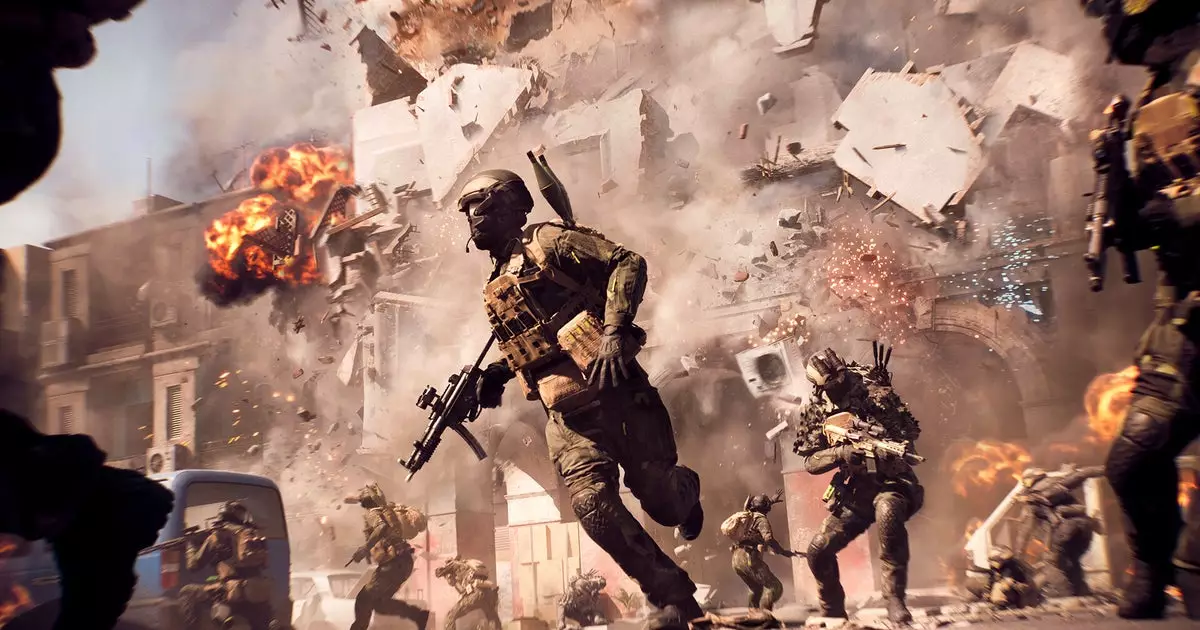The recent insights into Battlefield 6’s hardware demands reveal an intriguing balancing act. On one hand, the minimum specs suggest that a relatively modern gaming rig—equipped with an Intel Core i5-7600K or AMD Ryzen 3 1200, 16GB of RAM, and an Nvidia RTX 2060 or AMD RX 5600 XT—will suffice to run the game. This is noteworthy because it hints at EA’s conscious effort to make the game accessible to a broader audience without necessitating catastrophic hardware upgrades. Yet, the vagueness in performance benchmarking leaves room for skepticism. Will players achieve a playable frame rate? Will graphics degrade into an unrecognizable mess at these settings? The lack of specific FPS or quality settings hints at an ongoing process of optimization, which has historically been a battlefield in itself for AAA titles. It’s commendable that EA is setting plausible baseline requirements, but the real challenge lies in how well the game scales up with higher-end configurations. For gamers, this means hope, but also caution—to truly enjoy the battlefield experience, expectations must be tempered until concrete performance data is available.
Proposing a Clearer Path Forward Through the Recommended Specs
Moving beyond the minimum specifications, the recommended setup pushes the envelope: an Intel i7-10700 or AMD Ryzen 7 3700X, 16GB of RAM, and a shiny new RTX 3060Ti or RX 6700-XT. These figures evoke the image of a modern, well-equipped gaming PC capable of delivering not just playable framerates but a visually immersive experience. The 80GB storage requirement is also a stark indication of the game’s anticipated grandeur—perhaps packed with expansive environments, sophisticated physics, and high-fidelity audio. However, the absence of detailed performance benchmarks tied to this hardware invites gamers to interpret “recommended” as a promise of decency, rather than a guarantee of excellence. It’s clear that EA aims to make Battlefield 6 a technological showcase, but it remains to be seen whether their optimization efforts will keep pace with the promise. This ambiguity underscores a broader industry challenge: many gamers purchase hardware based on marketing specs, only to be disappointed when actual in-game performance falls short.
Platform Soul-Searching: Digital Distribution and DRM Dilemmas
The speculations about platform requirements carry a distinct undertone of broader digital rights debates. On Steam, players are spared the hassle of launching EA’s proprietary app to play Battlefield 6, which is a refreshing development. It suggests that Valve and EA are perhaps recognizing consumer fatigue with launchers and fragmented ecosystems. However, loyalists who plan to buy via Epic Games Store will need both the EA app and an EA account—an additional layer of complexity that turns what could be an effortless experience into a logistical chore. This dichotomy raises larger questions about platform exclusivity and user convenience. Should gamers accept the inconvenience of multiple launchers, or demand a more unified digital environment? EA’s stance indicates an ongoing struggle between maintaining control via proprietary platforms and respecting user preferences for seamless access. The way these platform considerations unfold could heavily influence player adoption, satisfaction, and even the game’s long-term versatility.
Accessibility and the Narrative of Unity
One of the most surprisingly reassuring statements from EA is that “you do not need to have played any other Battlefield game to understand or enjoy Battlefield 6.” While this sounds promising on the surface, it makes one wonder about the underlying complexity of modern FPS games. Do new players need only grasp the basic notion of a battlefield, or will they still be overwhelmed by the layered mechanics and nuanced strategies that seasoned veterans enjoy? The statement might serve primarily as a marketing tool to attract fresh audiences, but it also subtly highlights a growing industry trend—games are now seemingly designed to be more inclusive, accessible, and less reliant on a shared legacy of previous titles. Nevertheless, the reality is that even the most intuitive multiplayer may require some learning curve—something EA should consider as they craft tutorials and onboarding experiences. If the studio truly wants to foster a diverse and vibrant community, simplifying the entry point is fundamental.
Final Reflection: A Mixed Promise with Exciting Potential
Battlefield 6’s announcement reveals a game caught between pushing technological boundaries and managing the realities of player hardware diversity. EA’s attempt to strike a balance between accessibility and high-fidelity graphics is both commendable and fraught with challenges. The vagueness around performance metrics and the platform ecosystem underscores a reality many gamers recognize: the path from ambitious specs to actual gameplay quality is fraught with hurdles. Still, if EA leverages their resources wisely, Battlefield 6 could redefine what multiplayer shooters mean in terms of scale, immersion, and inclusive design. The true test lies ahead—in the optimization cycles, the player community’s reception, and the evolving landscape of digital game distribution. If handled with clarity and a genuine focus on player experience, this game has the potential to elevate the franchise and set a new standard within the genre.


Leave a Reply